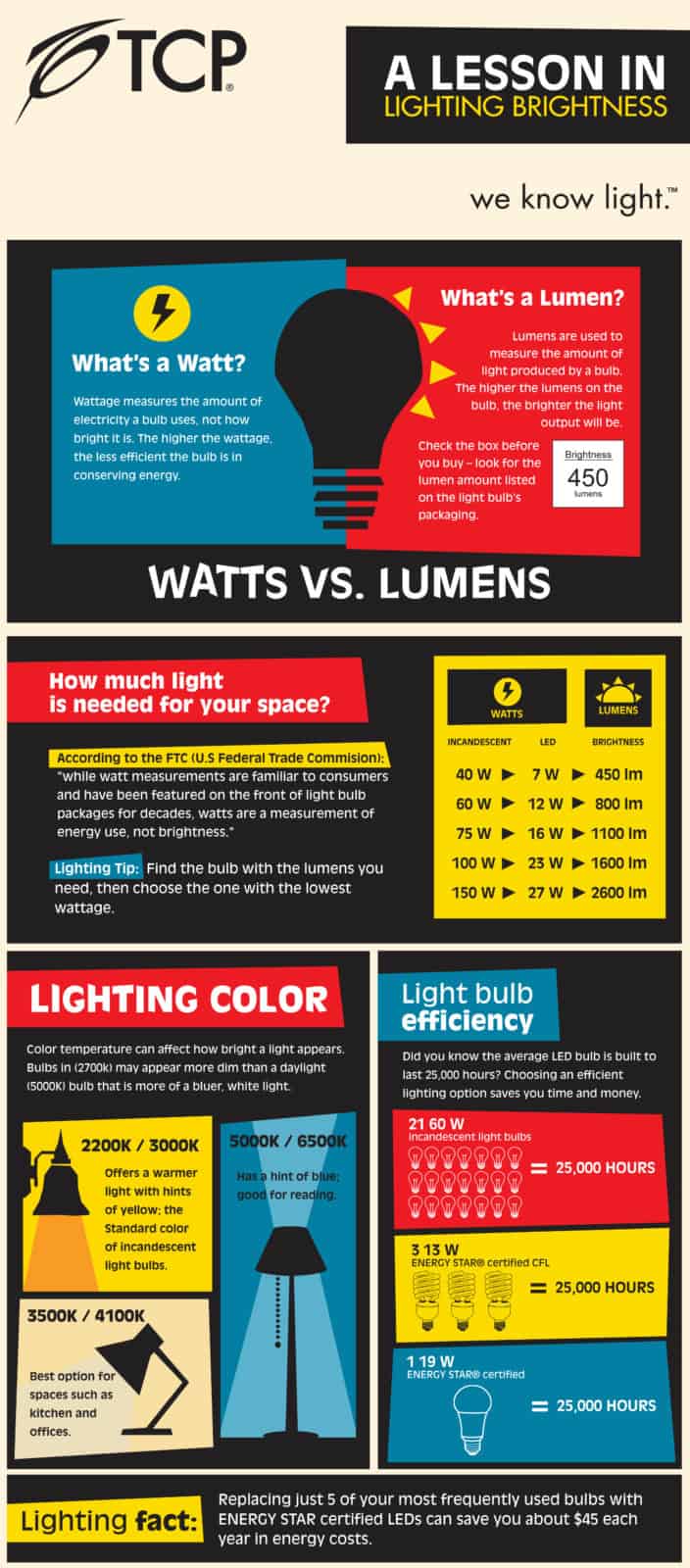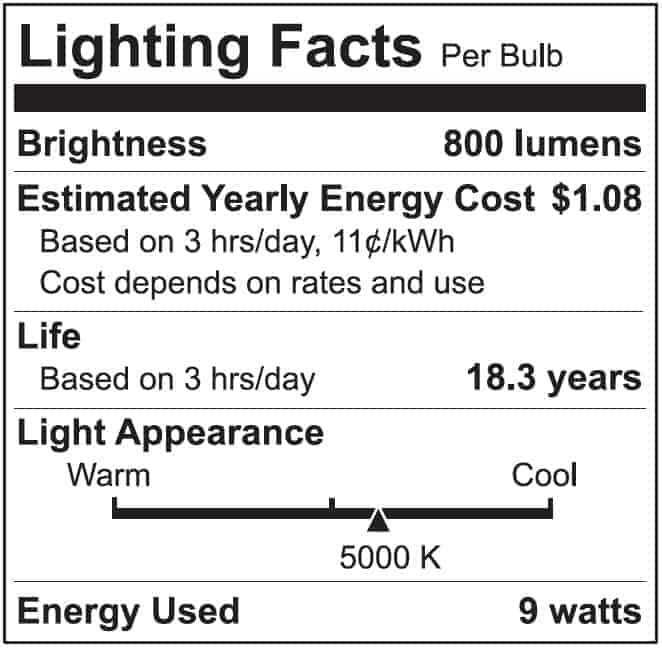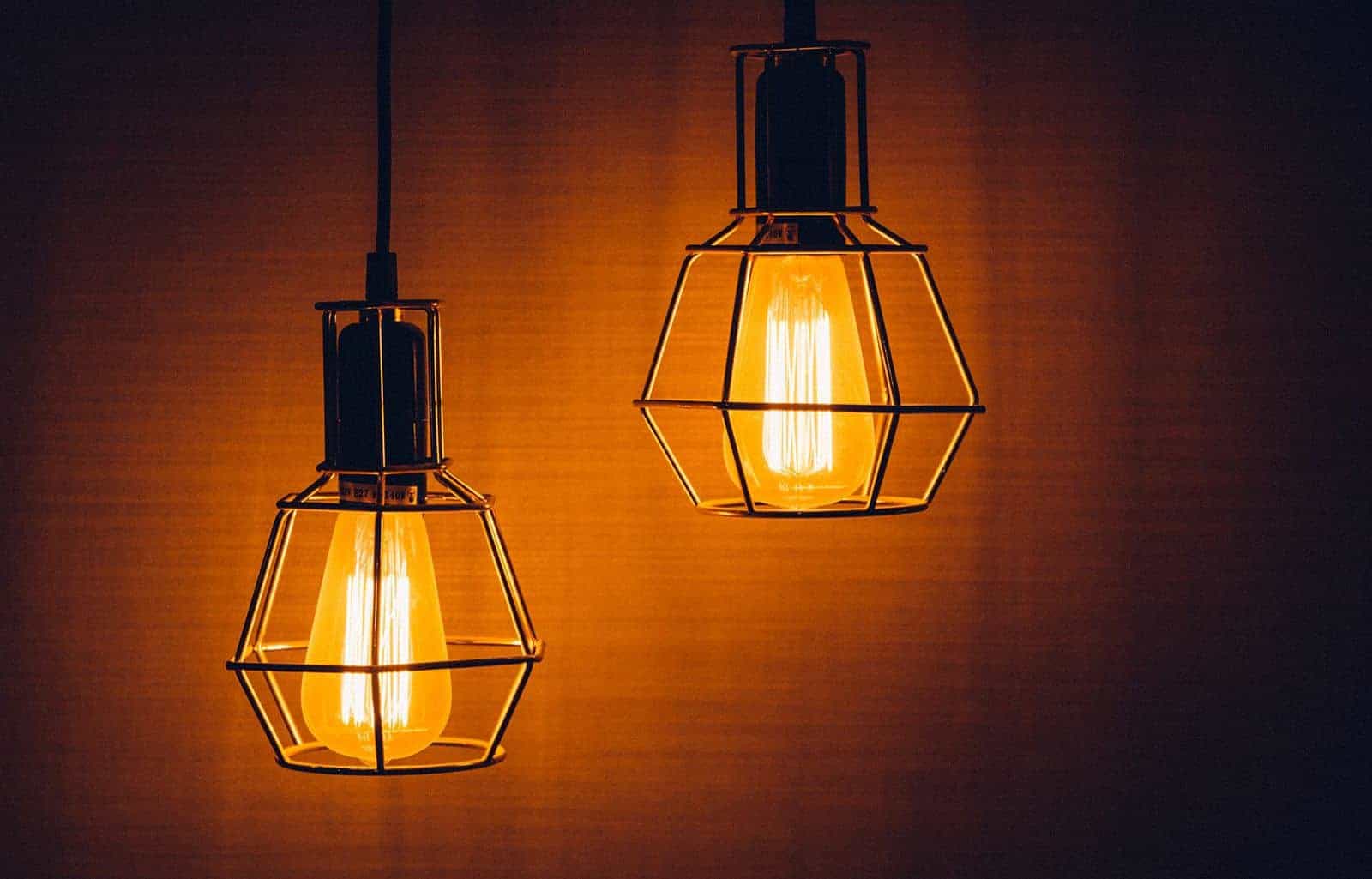A Lesson in Lighting Brightness
Lighting Brightness: Lumens vs. Watts
Lighting technology has evolved tremendously in the past 10 years. Prior to the introduction of energy efficient light bulbs, wattage was a common measurement used to determine brightness for incandescent light bulbs. Now that we know incandescent bulbs release 90% of their energy as heat and more efficient options such as LEDs and CFLs are now sold in just about every store you can think of – its time to start thinking of light bulb brightness in terms of lumens.

Download a copy of the infographic
What is a Watt?
Wattage is a measurement of the amount of electricity a bulb uses, not brightness. The higher the bulb wattage, the less efficient the bulb is in conserving energy. Energy efficient bulbs were created to decrease wattage (energy usage) and increase overall rated life (how long the bulb will last) – all in all, meaning less money out of your pocket and less time spent switching burnt out bulbs.
What are Lumens?
Lumens are used to measure the amount of light produced by a bulb. The higher the lumens on the bulb, the brighter the light output will be.
What to Look for When Buying a Light Bulb:
Similar to nutritional labels on food, the Federal Trade Commission (FTC) has developed a lighting facts label that showcases the most important info to make the best lighting choice for your space. The most commonly used household bulb is a 60-watt equivalent, or 800 lumen energy-efficient LED or CFL. The chart listed above is a great resource to help replace your existing lighting with energy efficient options.
Lighting Tip: For ultimate energy savings, find the bulb with the lumens you need, then choose the one with the lowest wattage.

Lighting Appearance:
A light bulb’s color temperature can affect how bright a light appears, even if the lumens are the same. Color temperatures that give off a soft, yellow glow (3000K and lower) may appear more dim than a bulb with a color temperature that is similar to the blue, white light given off by natural daylight (3000K and above).
Lighting Efficiency:
Did you know, the average LED bulb’s life is 25,000 hours, or 22.8 years? Choosing an efficient lighting option saves you time and money. LED bulbs are available in multiple color temperatures and types that are suitable for all areas of your home. To learn more about TCP’s light bulbs and where to find them near you, visit our ‘where to buy’ page here.
Additional Lighting Info:
Check out our helpful lighting videos for more info on lighting choices that will save you money and reduce your carbon footprint:







